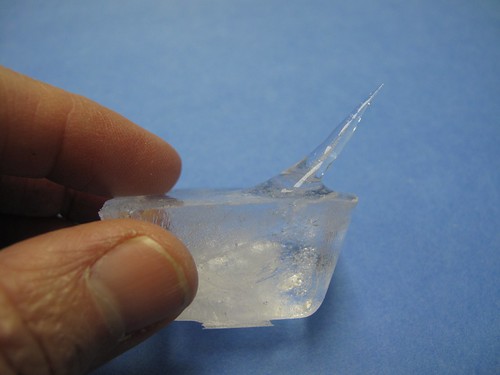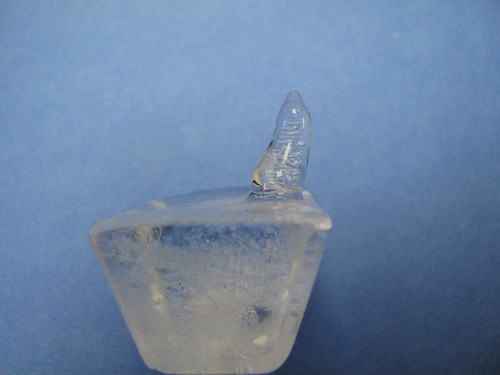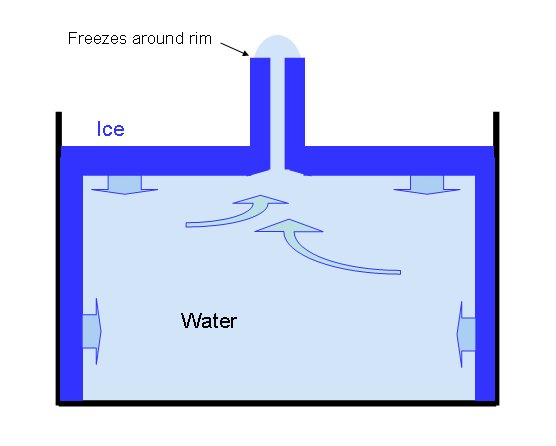Ice spikes
January 21, 2011 at 10:08 PM by Dr. Drang
The cold front that came through the upper Midwest today guarantees two things:
- Clever bon mots like “How ’bout that global warming now, huh?”
- Burst water pipes1 in poorly insulated homes.
Pipes burst because ice is less dense than water—that’s why ice cubes float—so when water freezes, it expands. The expansion is about 9%.
Another, less damaging effect of the expansion of ice is the growth of ice spikes, vertical protrusions that sometimes form in ice cubes. Yesterday, the fridge in my company’s kitchen had a tray of cubes with no fewer than five ice spikes. A couple were the narrow, delicate spikes that I’m used to seeing and which are featured on the aforelinked Caltech page.

A few of them, though, were much thicker than I’d seen before and were vaguely—OK, more than vaguely—pornographic.

Ice cubes freeze from the outside in, and spikes form when most of the top surface of the cube has frozen over. The water inside the cube needs to expand as it freezes, so it escapes out whatever unfrozen hole is left in the top. The outer rim of this extruded water freezes first, creating a tube that grows as more water rise up and freezes.
It’s always fun to find ice spikes when I open the freezer door. The other spikes in this tray of cubes are shown in this Flickr set.
-
Yes, I realize the blog has become water pipe-centric these last couple of days. I promise I won’t mention pipes again for a while. ↩


